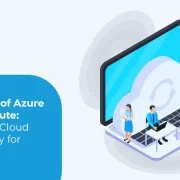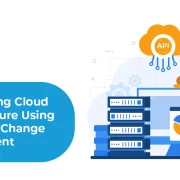
The Dos and Dont’s of Microlearning: What Works and What Doesn’t?
Summary
This blog delves into microlearning, defining it and outlining its benefits. It discusses best practices and essential considerations for creating effective, bite-sized learning content. This approach engages modern learners with short, focused, and mobile-friendly modules, making learning accessible and efficient.
The time when we consumed information from lengthy PowerPoint presentations and cumbersome Learning Management Systems courses has passed. Today, the global workforce embraces the dynamic and bite-sized approach of microlearning.
This method, tailored to the preferences and patterns of today’s employees, consistently demonstrates its superior engagement, efficiency, and cost-effectiveness. But what exactly comprises this training approach?
This guide will tell you everything you need to know about the microlearning training method, offering insights into its definition, the tangible advantages it provides, and examples of what works and what doesn’t in your employee training strategy. So, let’s get started!
Table of Contents:
- Understanding Microlearning In-Depth
- Exploring the Various Shapes of Microlearning Materials
- Top Six Benefits of Microlearning
- The Dos and Don’ts in Microlearning for Effective Corporate Learning
- Final Thoughts
Understanding Microlearning In-Depth
Microlearning revolutionizes the delivery and consumption of educational content by offering concise, 3-5 minute segments precisely when learners need them, with a clear and targeted learning objective. This approach enables learners to manage their learning experience, fitting it into their hectic lives at convenient times and locations.
It’s crucial to note that the effectiveness of microlearning is grounded in the scientific principles of the forgetting curve, as identified by Hermann Ebbinghaus. This curve illustrates that large volumes of information lead to a rapid decline in memory retention, with individuals forgetting about 80% of what they’ve learned within a month. This significant decrease highlights why microlearning is viewed as a hopeful strategy for creating compelling learning experiences.
By segmenting information into smaller, manageable pieces and facilitating timely review, microlearning effectively addresses the forgetting curve, improving the retention of crucial information and its application in everyday activities.
Exploring the Various Shapes of Microlearning Materials
Microlearning materials come in various shapes, but they all share one critical attribute: brevity and clarity. Here’s a rundown of common microlearning content types:
- Text: Concise paragraphs, quick messages, or simple tips
- Images: Informative illustrations, photographs, or diagrams
- Videos: Brief, engaging explainer videos akin to those found on social media platforms (e.g. reels)
- Audio: Short audio clips of audio or music
- Interactive Elements: Engaging quizzes, games, flashcards, and other gamified features
Microlearning platforms that offer diverse content types and replicate the brief, engaging experience of scrolling through social media are the most engaging to your audience. The goal is to make learning enjoyable and accessible, enabling learners to quickly resume their progress and stay motivated.
Such a learning approach is valuable in various scenarios, from orienting new team members to rolling out organizational safety programs.
Also Read: Leading the Way in a Hybrid Workforce: Effective Strategies for Distributed Teams
Top Six Benefits of Microlearning
Microlearning could revolutionize your Learning & Development (L&D) strategy with its brief, impactful approach. Here’s how:
1. Efficiency in Learning
Given that employees have only 1% of their workweek available for L&D, microlearning enables quick skill acquisition or refreshing their knowledge, fitting seamlessly into tight schedules. This method transforms idle moments into productive learning opportunities.
2. Simplified Delivery
For employers, microlearning streamlines the creation and distribution of training content. Leveraging intuitive tools, you can rapidly develop and absorb bite-sized courses, bypassing the need for extensive preparation associated with traditional training methods. This efficiency allows for agile responses to evolving organizational needs.
3. Aligns with Modern Consumption Habits
Reflecting on the mobile-centric world, where 58.67% of website visits in 2023 were from mobile devices, microlearning’s compatibility with mobile learning meets the modern learner’s preferences.
This ensures that training is accessible through the devices people use in daily life, enhancing engagement and effectiveness.
4. Enhanced Engagement
Microlearning captivates learners by mimicking the engaging, concise content experienced on social media.
Incorporating interactive elements like quizzes and short videos significantly outperforms traditional training formats in maintaining learner interest.
5. Improved Retention
Research indicates that microlearning can increase focus and significantly enhance long-term retention by as much as 80%. Its simplicity allows learners to easily revisit the content, and refresh their knowledge and application in their roles, including improved customer interactions in client-facing positions.
6. Supports Individual Learning Pace
Unlike the one-size-fits-all approach of many traditional LMS courses, microlearning accommodates diverse learning speeds and styles, offering the flexibility to engage with content as preferred.
This adaptability not only boosts completion rates but also positions training as an opportunity to consume knowledge rather than a disruption.
The Dos and Don’ts in Microlearning for Effective Corporate Learning
Microlearning, with its concise and targeted approach to training, offers an efficient and engaging way to enhance skill sets and knowledge. When implemented correctly, it can significantly improve knowledge retention, learner engagement, and overall efficiency.
Understanding the dos and don’ts of microlearning is crucial to leveraging its full potential. Here’s a comprehensive guide to what works and what doesn’t in microlearning.
The Dos of Microlearning
- Keep It Short and Focused: The essence of microlearning lies in its brevity. Aim for content that learners can complete in a few minutes, focusing on a single, specific objective to avoid cognitive overload.
- Incorporate Various Media Types: Use a mix of text, images, videos, and interactive elements to cater to different learning preferences and keep the content engaging.
- Make It Accessible and Mobile-Friendly: Ensure your microlearning content is easily accessible across devices, especially smartphones, to allow learning anytime, anywhere.
- Align With Learning Goals: Each microlearning module should have a clear purpose and directly contribute to the overall learning objectives.
- Enable On-Demand Learning: Design microlearning to be self-contained so learners can access the information they need exactly when they need it, supporting just-in-time learning.
- Apply Real-World Scenarios: Use practical examples and real-life situations to make the learning experience relevant and immediately applicable.
- Encourage Continuous Learning: Structure your microlearning strategy to promote regular engagement, reinforcing concepts over time to improve retention.
The Don’ts of Microlearning
- Don’t Overcomplicate Content: Avoid packing too much information into a single session. Microlearning thrives on simplicity and focus.
- Don’t Ignore the Learning Path: While microlearning modules are great as standalone resources, they should also fit within a broader learning pathway or curriculum.
- Don’t Neglect Assessment: Even though microlearning sessions are brief, incorporating quizzes or short assessments can help reinforce learning and gauge understanding.
- Don’t Forget Feedback: Provide immediate feedback, especially in interactive elements, to enhance the learning experience and correct misunderstandings in real time.
- Don’t Underestimate Design: Poorly designed content can detract from the learning experience. Invest in high-quality, visually appealing materials that reflect the content’s value.
- Don’t Isolate Learners: Encourage social learning opportunities, such as discussion forums or group challenges, to complement the microlearning experience.
- Don’t Skimp on Quality: The brevity of microlearning doesn’t mean quality should suffer. High-quality content is crucial for engaging and effective learning.
By adhering to these dos and don’ts, you can create a microlearning strategy that meets your learners’ needs and maximizes the impact of your training initiatives.
When done right, microlearning can be a powerful tool in the modern educational toolkit, providing learners with the knowledge and skills they need in a format that suits their lifestyles and preferences.
Check Out EXCLUSIVE: Hurix Mini-Book: Effective Training Techniques For Enterprises With Distributed Workforce
Final Thoughts
Designing microlearning programs for a generation that consumes content through mobile devices demands a unique approach to analyzing learning needs, setting objectives, and developing content than traditional desktop e-learning or classroom training methods.
The most significant advantage of microlearning programs lies in their ability to provide learners with a continuous, always-on learning experience—a journey that never needs to conclude.
At Hurix Digital, we specialize in providing top-notch learning experiences that align with these principles, offering bespoke e-learning solutions tailored to meet the unique needs of our clients. Contact us today to discover how we can transform your learning and development strategy with effective microlearning solutions!

A highly enthusiastic and motivated sales professional with over twenty five years of experience in solution selling of training-related applications and services. Maintains an assertive and dynamic style that generates results. Ability to establish long-term relationships with clients built on trust, quality of service and strategic vision. Specializes in financial services, higher ed, publishing and government in the areas of learning and development.




